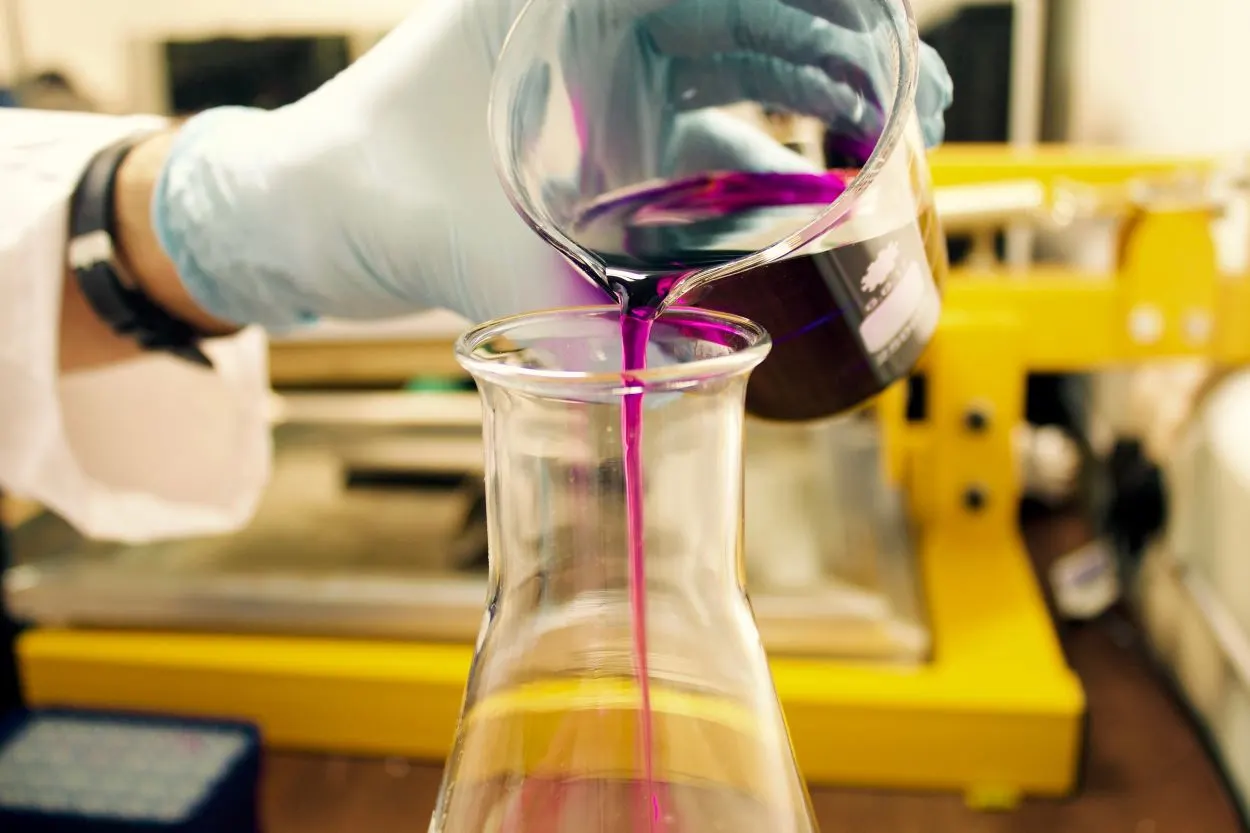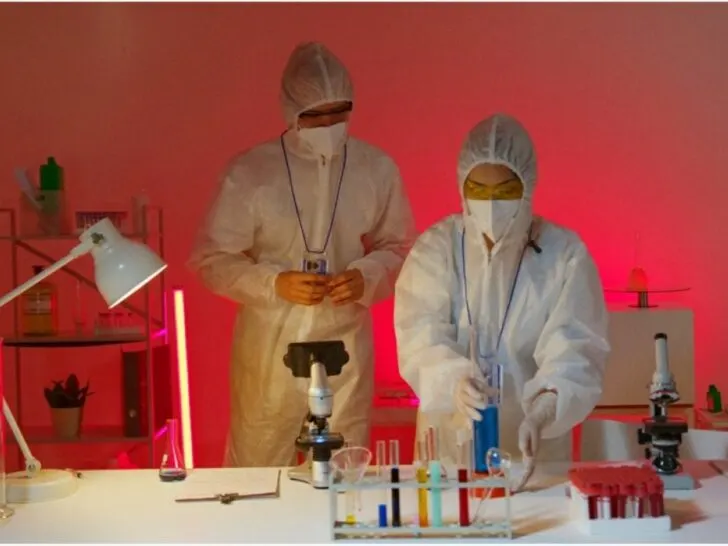A chemical reaction is a reaction in which a chemical change occurs when we combine two or more substances thus forming a new substance. Chemical reactions are exceptionally significant in our daily lives. This article is about chemical reactions. Here, we will discuss the differences between an equivalence point and an endpoint in a chemical reaction. Both are important in analytical chemistry.
The main difference between the equivalence point and the endpoint is that the equivalence point comes in a titration process when the moles of the titrant get equivalent to the moles of the titrand. But, an endpoint of this process is attained when the reaction takes place and the substance changes its color. It means that the required amount of a reactant has been mixed in the solution.
The equivalence point can be attained even before the change of color occurs in a chemical reaction. On the other hand, the endpoint is reached when there is a change of color in a chemical reaction. The equivalence point is a theoretical point, and the endpoint is not a conceptual point. It is an actual point that we discover in the laboratory.
The equivalence point can take place several times during a chemical process. However, the endpoint only takes place once in a chemical process.
Now, before jumping onto the subject. Let me explain to you the definition of the chemical reaction.
What Is The Definition Of A Chemical Reaction?
It is a reaction in which a chemical change occurs while combining two or more substances and forming a new material. A chemical reaction regroups the basic atoms of the reactants, which results in the formation of various substances as products. The products have features that are distinct from the reactants.
These reactions are fundamental aspects of technology, society, and even existence. Many activities involving chemical changes that have been recognized and practiced for thousands of years include heating fuels, smelting iron, creating glass and pottery, making beer, and manufacturing wine and cheese.
The examples are:
- We mix Iron (Fe) and Sulphur (S) to form Iron Sulphide (FeS)
Fe(s) + S(s) → FeS(s)
- We can make slaked lime by combining Calcium Oxide (CaO) and water (H20). The reaction will be,
Cao(s) + H2O (l) → Ca (OH)2(s)
- Electrolysis is an endothermic activity that breaks down water into its constituent atoms. We complete this process using electrical energy rather than thermal energy. The reaction will be.
2 H2O(g) → 2 H2(g) + O2(g)

How Many Types Of Chemical Reactions Are There?
We can divide most chemical reactions into five categories. Knowing how to predict the products of unknown reactions requires a detailed grasp of all these reactions. Following are the five types of chemical reactions,
- Combustion reaction
- Single-displacement reaction
- Double-displacement reaction
- Combination reaction
- Decomposition reaction
What Should You Know About The Equivalence Point In A Chemical Reaction?
To understand the definition of the Equivalence point, you should know that it is the actual point in a titration where the moles of one titrant get equalled to the moles of the other substance being titrated. This point is known as the equivalence point.
For instance, in an acid-base titration, the moles of the base will get equal to the moles of the acid at the equivalence point. As the titration advances, we use the change in pH, to monitor acid-base titrations. The equivalency point is not anything like the endpoint of the titration process.
Do you know the methods to determine the equivalence point?
Well, that is not difficult at all. The method includes PH change, color change, the difference in conductivity, change in temperature, and the formation of a precipitate. We can find the equivalence or stoichiometric point in a titration process when there is enough base and acid to neutralize the solution.
Do you know?
The Equivalence point in a chemical reaction is also known as the Stoichiometric point.

Eight Methods To Find The Equivalence Point Of A Titration Process!
There are several methods to spot the equivalence point of a titration process.
- PH indicator
- Conductance
- Colour change
- Precipitation
- Amperometry
- Thermometric Titrimetry
PH Indicator
We can use a color PH indicator to spot the equivalence point of a titration. The PH indicator changes the color as maintained by the PH. We add the indicator dye at the start of the titration process. When we notice the change of color at the endpoint, it indicates the estimation of the equivalence point.
Conductance
Do you know that conductance is not an easy method to determine the equivalence point of a titration? Because other ions are also present in the solution, which contributes to its conductivity. Ions influence the electrical conductivity of a solution. However, when ions react, the conductivity of the mixture changes.
Colour Change
Colour change is the primary method to determine the equivalence point of a titration process. In some reactions, the color automatically changes at the equivalence point. You can see this in redox titration, in which we require transition metals.
Precipitation
We can use precipitation to spot the equivalence point of a titration process when an insoluble precipitate appears as the result of the chemical reaction. However, determining precipitation can be challenging because of particle size, color, and sedimentation rate, which is very difficult to see.
Amperometry
Amperometry is a practical method to determine the equivalence point of a titration process. When we eliminate the excessive titrant, we use this method of amperometry.
Thermometric Titrimetry
The amount of temperature change that happens in a chemical reaction is the way to determine the equivalence point in Thermometric Titrimetry. Do you know that there is an inflection point? Which shows the equivalence point of an endothermic and exothermic reaction.
Isothermal Calorimetry
We use an isothermal titration calorimeter device to produce a certain amount of heat. By measuring the heat, we determine the equivalence point of a titration process. We usually use this method in biochemical reactions to determine the equivalence point.
Spectroscopy
We can use spectroscopy to spot the equivalence point only if we know the titrant, product, reactant, and spectrum of the reactant. We use this method to identify semiconductor etching.

What Should You Know About The Endpoint Of A Chemical Reaction?
The endpoint in a chemical reaction is the point where it changes color during the titration process. It represents the end of the titration.
We can attain an endpoint by carefully handling the number of drops of the titrant. We can change the PH of a solution by a single drop. The endpoint is also known as a volumetric point.
Eight Differences Between An Equivalence Point And An Endpoint In A Chemical Reaction
| Equivalence point | Endpoint |
| What is the difference in their definition? | |
| It is the point in a titration process when the moles of the titrant get equivalent to the moles of the other substance that is being titrated. | However, the endpoint of the titration is identified when the indicator changes its color. |
| When do they occur? | |
| The equivalence point occurs before the endpoint. | The endpoint occurs after the equivalence point. |
| Theoretical Vs actual | |
| The equivalence point is a theoretical point. | The endpoint is not a theoretical point. It is an actual point that we discover in the laboratory. |
| The relation with weak acids | |
| Numerous equivalence points are possible for weak acids. | Only one endpoint is possible for weak acids. |
| How many times do they take place? | |
| Equivalence point takes place numerous times in the chemical process. | It just takes place once in a chemical process. |
| Do they complete the titration process? | |
| The process of titration is not complete when we get the equivalence point. | The process of titration is complete once we get the endpoint. |
| What completes a reaction between the titrant and the analyte? | |
| It denotes the end of the reaction between the titrant and the analyte. | It does not denote the end of the reaction between the titrant and the analyte. |
| The change in color | |
| We get the equivalence point before the change of color occurs in a chemical reaction. | The endpoint is indicated when there is a change of color in a chemical reaction. |
Do You Know Why Chemical Reactions Are Essential?
Chemical reactions are very important in our daily lives.
- Because of the chemical reactions, people start taking an interest in chemistry as it brings excitement and entertainment.
- We can even work on crime mysteries by examining the blood samples with the help of chemical reactions.
- Chemical reactions help us to decide which planet can experience life.
- The human discovery, fire, is nothing more than a chemical reaction.
Conclusion
- Chemical reactions create new substances. They play a crucial role in daily life, technology, and industry.
- The equivalence point is when titrant moles are equal to titrand moles.
- Endpoint, or volumetric point, is the color change that indicates titration completion. It is observed in the lab.
- Equivalence points can happen multiple times. While the endpoint occurs once.
- Titration isn’t complete at the equivalence point but finishes at the endpoint.
- Equivalence point is a theoretical concept. The endpoint is an actual lab observation.
- Chemical reactions are essential for crime analysis, space exploration, and daily life.
- Equivalence points and endpoints are vital in analytical chemistry during titration processes.
Related Articles
- What Is The Difference Between Vectors and Tensors? (Explained)
- The Difference Between dy/dx & dx/dy (Described)
- What Is The Difference Between An Active And A Reactive Force? (The Contrast)
- Difference Between Conditional and Marginal Distribution (Explained)
- Base VS Nucleophile: Understanding Important Facts

